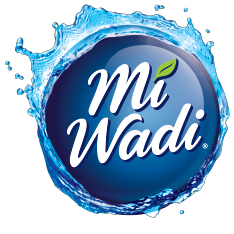1920s
1930s
1940s
1950s
1960s
1970s
1980s
1990s
2000s
2010s
2020s

1920s
MiWadi takes its name from Mineral Water Distributors.
The company was formed in 1927 in Nassau Place in Dublin. The company produced MiWadi as well as C&C and Club.
Mineral Water Distributors was a small company with approx. 80 employees.
The MiWadi syrup was made up in the Syrup Room on the second floor and then manually filled downstairs.

The 1930's
MiWadi The 1930's.
It wasn't until the 1930's that MiWadi was being produced on a daily basis. MiWadi was manufactured by hand.
The bottles were washed and then passed along a line where they were filled and labelled. MiWadi was then cellophane wrapped to protect the bottle, the cellophane wrap also added the appearance of freshness
The bottles were then placed into wooden crates where they were distributed around Dublin by Horse and Cart. The production capacity was 60 dozen per day.
Flavours that were popular in the 30's were Orange, Lemon, Orange Barley and Orange Lemon but the biggest flavour was Grapefruit.
takes its name from Mineral Water Distributors.
The company was formed in 1927 in Nassau Place in Dublin. The company produced MiWadi as well as C&C and Club.
Mineral Water Distributors was a small company with approx. 80 employees.
The MiWadi syrup was made up in the Syrup Room on the second floor and then manually filled downstairs.

The 1940's
During this period MiWadi was also carbonated and replaced Club Orange as the fizzy Orange drink.
The drink was sold in Chemists. Cordials were considered to be healthy drinks and were given to people when they were sick.
It was considered an expensive treat during the 40's if you were able to drink MiWadi. A small fleet of lorries were used to distribute the product around Dublin.

The 1950's
The 1950's were still a difficult period in Ireland.
The economy was still recovering after the war years and emigration was high. You could even buy a house for £1,000. In the 1950's MiWadi moved into semi automated production.
This meant that the filling was done by machine but the washing, labelling and capping remained to be conducted by hand. The use of this machinery increased the factory's output from 60 dozen a day up to 200 dozen a day.
Screw caps were introduced to replace corks and MiWadi was sold in cardboard cartons.
New flavours such as Blackcurrant were added to the range and MiWadi Glucose, an energy drink, was popular.

The 1960's
In the 1960's machines were introduced to do much of the MiWadi production. Cellophane was still used to wrap the glass bottles before stacking.
MiWadi still was mainly sold in chemists but was becoming more popular in larger Grocers. In 1967 MiWadi production was moved to Ballyfermot where a new, larger factory was build to cope with demand.
1960's MiWadi Blackcurrant Flavour Packaging Label
The company which produced MiWadi changed its name from Mineral Water Distributors to Thwaites and then to C&C but MiWadi still kept the same name.

The 1970's
The 1970's were boom years for the brand. The introduction of large supermarkets made the brand more accessible to more consumers.
Dunnes Stores was the first supermarket to order 1,000 dozen. The brand was repackaged in this decade to attract more consumers to the brand.
There was also a series of very successful MiWadi promotions - Space Hoppers and the MiWadi "Measure Me" chart captured the imagination of MiWadi drinkers.

The 1980's
In the 1980's MiWadi remained in glass for most of the decade but changed dramatically in the late 80's with the introduction of plastic bottles and plastic labels.
Orange and Blackcurrant were the most popular flavours.
The Brand became popular in bars where MiWadi became popular as "a dash" in drinks.
